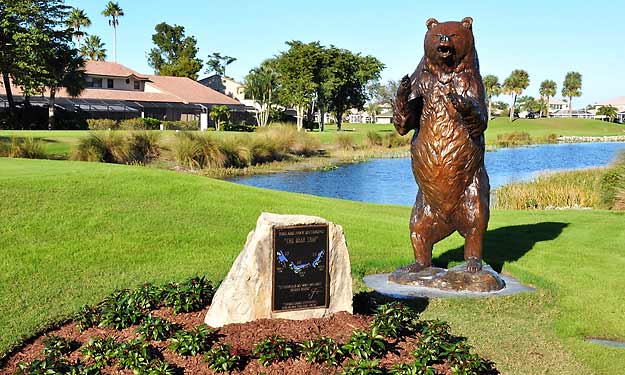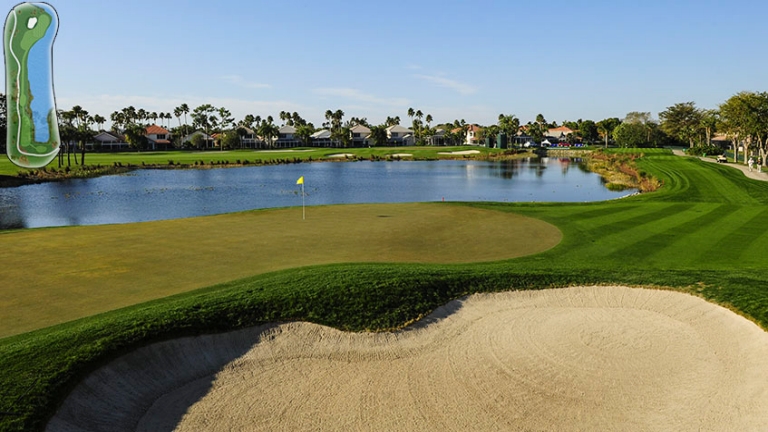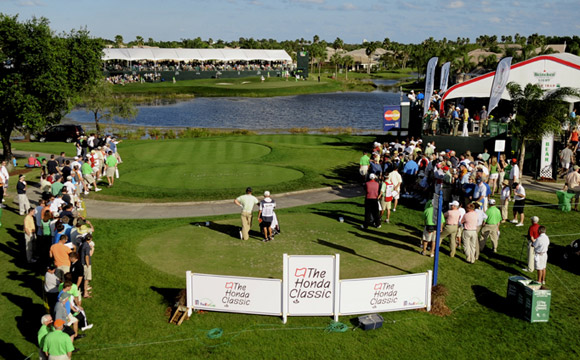This week the PGA Tour heads to Palm Beach Gardens, Fla. for The Honda Classic. Hosted at the Champion Course at PGA National Resort & Spa, it's home of the infamous Bear Trap -- which spans the 15th, 16th and 17th holes -- and designed by Jack Nicklaus.
PGA National Champion Course architecture and history
While originally designed by Tom and George Fazio in 1980 with major tournament play in mind, it underwent modifications in 1990 and a major renovation in 2014, both done by Jack Nicklaus.
Although the Champion has generous landing areas and spacious and accepting greens, golfers are presented with course management challenges throughout the round. The primary factor in scoring well besides the seemingly everywhere water hazards (26) and bunkers (78), is actually the weather. This might seem obvious, but Palm Beach Gardens historically gets bombarded with rain and, worse, swirling winds this time of year. For this reason, it’s unsurprising that so many international players have achieved success at this tournament. It’s kind of like a European Tour event.
The most notable aspect of the course is the aforementioned Bear Trap. So, let’s do a deeper dive into these three gnarly holes.

Holes to Watch: The Bear Trap

Hole 15: The first hole of the bear trap is a seemingly benign, medium-length par 3. However, the swirling winds make it tricky as the players are required to hit their tee shot into a diagonal green running left to right. In addition, the back of the green was raised after 1990 for visibility. The hole usually plays into a left-to-right wind and a fade aimed at the bunkers on the left will likely avoid the water on the right. The toughest pin is back right.
Hole 16: This dogleg right is the toughest par 4 of all of PGA National's 90 holes. The average score is 4.183. Not exactly great for a hole that’s only 434 yards. Off the tee, everything slopes toward the water on the right, but a bunker was added to catch balls that roll too far right. Those who bail out left are faced with a 220-yard second shot over water, into the wind. This hole presents a tee shot that most players will play with an iron just to get the ball out into the fairway. The second shot is played over water and into a green that's slightly elevated.

Hole 17: Again, a relatively straightforward par 3 over water. It was slightly lengthened to 190 yards and plays into a very small green that is bunkered on the left. Although there are eight sets of tees for recreational play, that means nothing for the pros. With the wind in the players’ faces or when it's blowing left to right toward the water to the right -- and a bunker long and left -- the only place to put the tee ball is on the green. Not exactly easy with just a 30-foot landing area.
Now, these holes don’t sound hard on paper, but after a long day of mentally draining strategic golf (and thinking about these holes all day), they finally arrive almost out of gas having to calculate the wind, direction, and maybe hit shot shapes they don’t prefer. Unfortunately, the holes are rather benign without any wind and not altogether architecturally interesting. However, they will be talked about endlessly.

